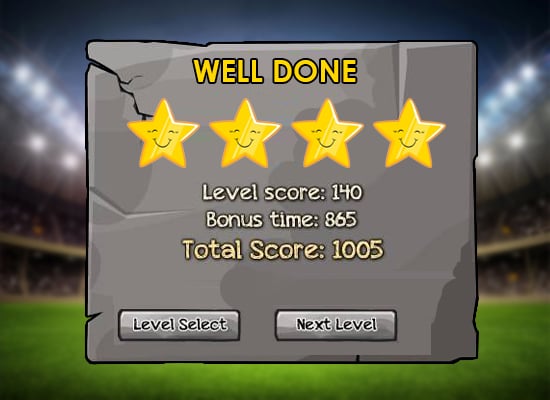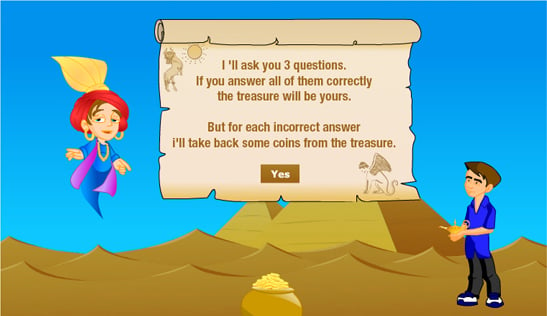Want More Learner Engagement? Add Competitive Elements of Games in Your eLearning Course

Sam, the head of an e-learning company, was about to leave for the day when he got a call from Tom, a client. Tom had a problem on his hands. He was reviewing the statistics on learner participation for the e-learning programs deployed in his company in the past six months, and was disappointed to find the programs received poor response from the staff.
→ Download Now: Instructional Design Strategies to Design Engaging eLearning Courses
The company was developing courses as part of an e-learning program for the next six months and he wanted more learner participation. He said as much to Sam, and asked for his help. Sam came up with the idea to include competitive elements of games in the e-learning courses to increase learner participation and involvement. Intrigued to know what Sam told Tom to promote his point? Let me share with you.
Humans are by nature a competitive race. We try to outdo each other in whatever we do and always strive to be the best. There is something fascinating about the idea of competition; it has been integral to human evolution. This is the reason we all love games. The spirit of competition is embedded in games. When playing games, you are either competing with yourself or with others. The urge to compete and win makes everyone of us a willing player.
Games and motivation

When playing games or any sport, motivation comes from the urge to earn points or win badges or medals. This, according to sport psychologists, Costas Karageorghis and Peter Terry in their book, Inside Sport Psychology (1969) “… is known as external, or extrinsic, motivation because it involves participation in sport for some kind of reward that is external to the process of participation1”.
Competitive elements in games such as competing against others, winning medals or earning points act as extrinsic motivators. These extrinsic motivators in the learning environment can be in the form of badges, medals, points, increased remuneration, or even a promotion that learners can achieve after completing the course. You might argue that the drive to learn (intrinsic motivation) will wear off once the course ends and consequently the extrinsic motivation as well. But if competitive game elements are inventively used in e-learning courses especially to achieve goal-oriented learning objectives, they can target even intrinsically motivated behaviors. So after the extrinsic motivation wears off, employees will realize the value of the new behavior they have learned or the knowledge they have gained and continue using it.
The competitive elements of games can be incorporated in e-learning through gamification. Karl Kapp in his book The Gamification of Learning and Instruction defines gamification as,“…using game-based mechanics, aesthetics and game thinking to engage people, motivate action, promote learning, and solve problems.” In e-learning, incorporating the typical elements of game play (e.g., point scoring, competition with others, rules of play) is gamification. The use of these game elements can have a positive effect on the learning experience.
Improving learner experience and engagement:
The use of games provides an informal learning environment. The element of fun inherent in games enhances the learner experience.
The instant feedback that game elements can provide helps learners realize what they know and what they need to learn. Feedback helps in better recall and retention. These factors improve learner experience and engagement.
Challenges learners:
Gamification adds an element of challenge to the course. When learners feel challenged, they are inspired to go through the course and even come back to it. As you know, people like the idea of overcoming obstacles and winning to move up to the next level. The element of mastery that is intrinsic to overcoming challenges motivates them to go through the course.
Motivates learners:
Consistent and positive feedback provided by gamification through points, badges, status, and progress bars increases motivation.
Competitive elements

Competitive elements of games are used in e-learning by incorporating some of the following features in gamification.
Games where learners compete:
The technique of continuous play, which allows learners to try again and again, encourages them to compete against themselves or improve their scores.
Leaderboards:
The competitive element of achieving a high score, a badge, or a reward is done through leaderboards. They display the scores of learners and rank them. Your learners will love them because public display means recognition for their skills and effort.

Points, Badges, Medals:
These are given to learners who score well in assessments, complete a section of the course or participate in activities. These can act as feedback on progress.
Score competition:
Games need to be scored. Scores drive learners to engage and compete and also let them know their level of competence. When a target score is set, your learners will vie for the top spot. This can be a good way to build engagement and friendly competition among employees.

Gamified assessments:
Assessments can be effective if they are in the form of games; they increase learners’ attention and provide an interactive experience.
Use with care
However these game elements must be used with care to avoid some of the common pitfalls associated with excessive use:
- Shift focus away from collaboration with other learners
- Diminish the importance of cooperation and sharing of ideas
- Learner focus shifts to winning rather than learning, especially if the rewards assume more significance
- The high level of competition some games involve can impact interpersonal equations at work if employees focus on winning at all costs
When incorporating game elements in courses, certain considerations are necessary to avoid such pitfalls:
- The games you include in the course should help learners reinforce their learning or provide essential feedback. They should not be used just for ranking learners or finding the fastest learner.
- Positive feedback must be part of the gamification which will encourage learners to share their performance with others.
- Ideally, the scoring system should allow for more than one learner to be recognized for achieving the same thing. This ensures games are not a competition to fill a top spot.
- Positive reinforcement is important when a learner does something right, each time.
- Let employees opt out of the game if they do not want to play because some of them might find the competition element stressful.
Learner participation and engagement is the core objective of any e-learning course; these can be partly achieved by including the competitive elements of games in courses.
Tom was convinced and gave his buy-in to Sam to add some game elements to the e-learning courses.
[1]Human Kinetics



![How to Link Learning Objectives to Organizational Goals in Rapid eLearning? [Infographic]](https://blog.commlabindia.com/hubfs/blogs/how-link-learning-objectives-organizational-goals-info.jpg)

